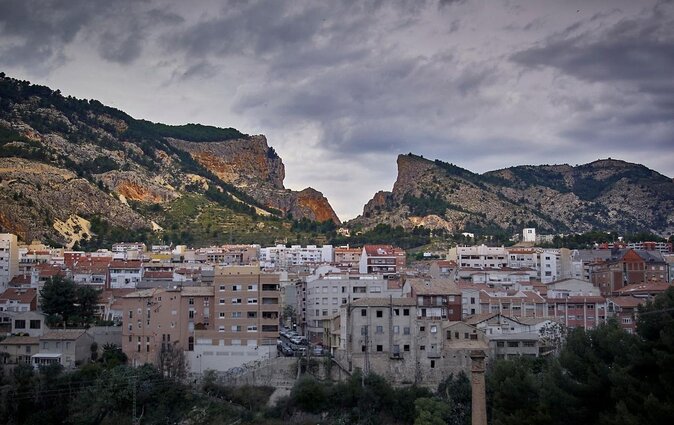
Alcoy

ISGLESIA SANTA MARÍA
The Santa María de Alcoy Church is a church that was rebuilt as a classical-style church in the same location between 1940 and 1954. Artifacts such as the Gothic panel with the image of the Virgin of Grace and paintings by Cristóbal Llorens are preserved, and a mural of the main altar is the work of the Alcoyan painter Ramón Castañer.
During the Spanish Civil War, the church was converted into the Abadía House of the Revolutionary Defense Committee, which later demolished and burned its archives.
A public swimming pool was built using the recovered materials from the church.
CEMENTERIO MUNICIPAL SAN ANTONIO ABAD
The cemetery in Alcoy is a valuable source of historical knowledge about the industrial society of the time. It was designed by engineer Enrique Vilaplana Jordá and is unique in Spain for its use of underground galleries. It shows the social and religious hierarchization of the time through its succession of typologies and funeral spaces. The cemetery has a wide variety of artistic styles and materials characteristic of the industrial era. It allows studying the iconography and iconology of the language and syncretic signs present. It is possible to investigate funeral botany and its arrangement in the grounds. It serves as a model for valuing a cemetery as a historical-artistic heritage element and is on the Route of Significant Cemeteries in Europe.
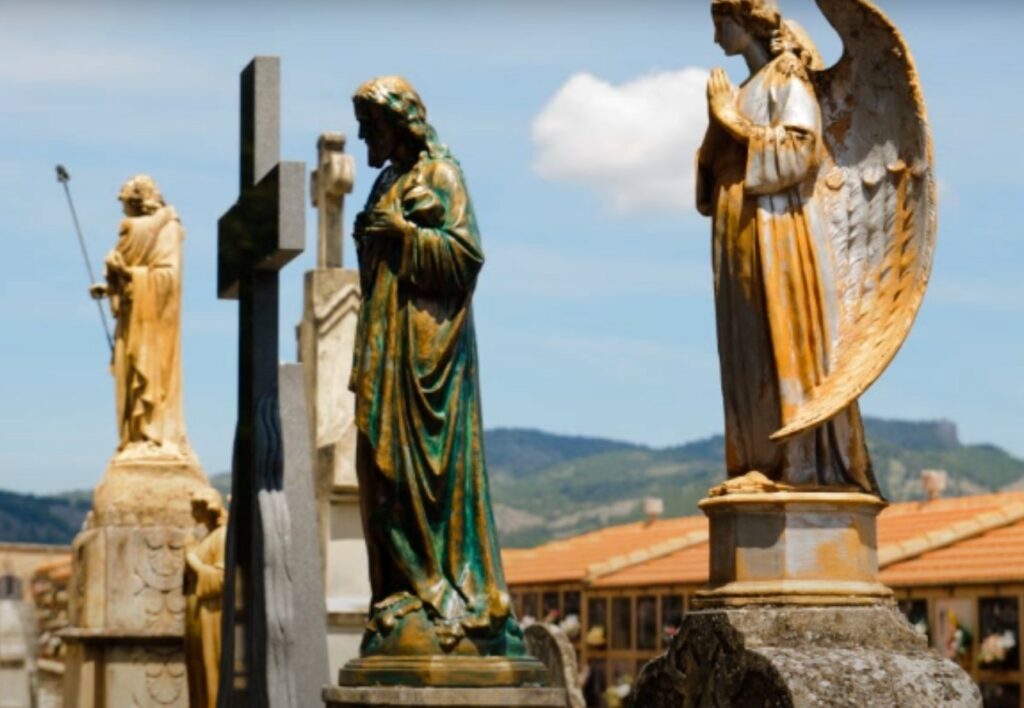
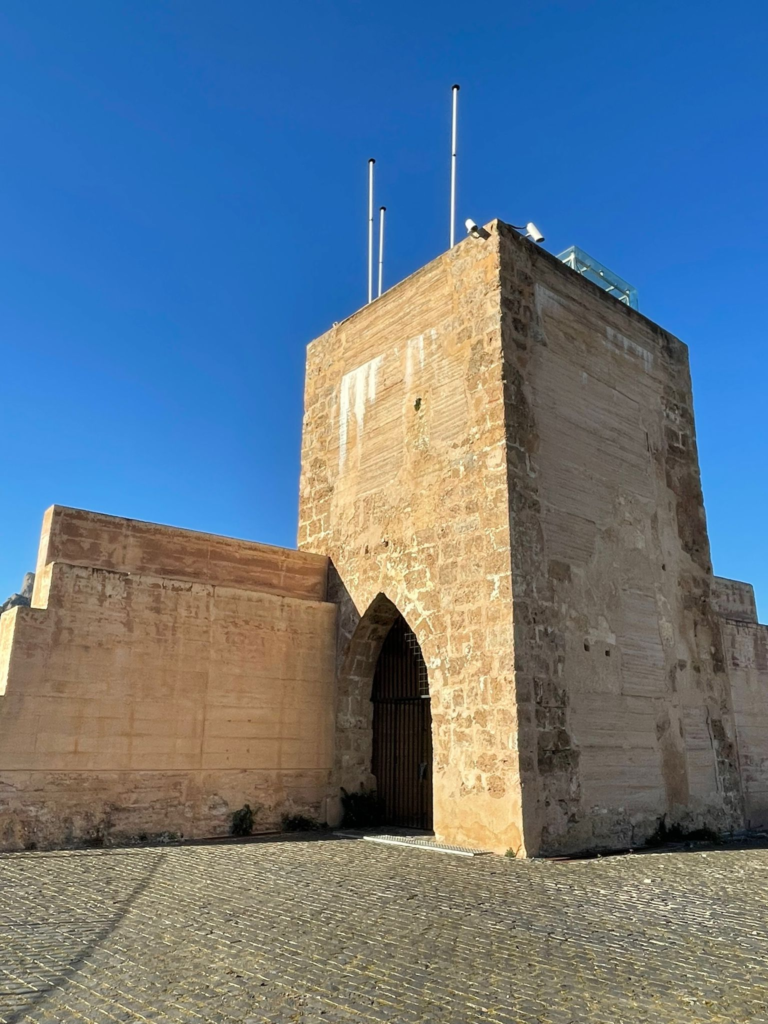
TORRE NA VALORA
It is one of the few remaining remains of the medieval walls that surrounded La Vila, the first enclosure of Alcoy in the Middle Ages, which were built in the second half of the 13th century. The tower has a stone base, an entrance door and stone corners, and was built with stone and mud brick.
It was renovated in 2002 and its strategic location allows for a wide view of the Riquer River and the Tints fields.
PUENTE DE SAN JORDI
This art deco-style bridge, built between 1925 and 1931, was an innovative work due to the use of reinforced concrete with formwork. It has a height of 42 meters above the Riquer River and a length of 156 meters. It was an urban revolution in Alcoy by allowing the connection of the city center with the expansion on the lands of l’Horta Major.
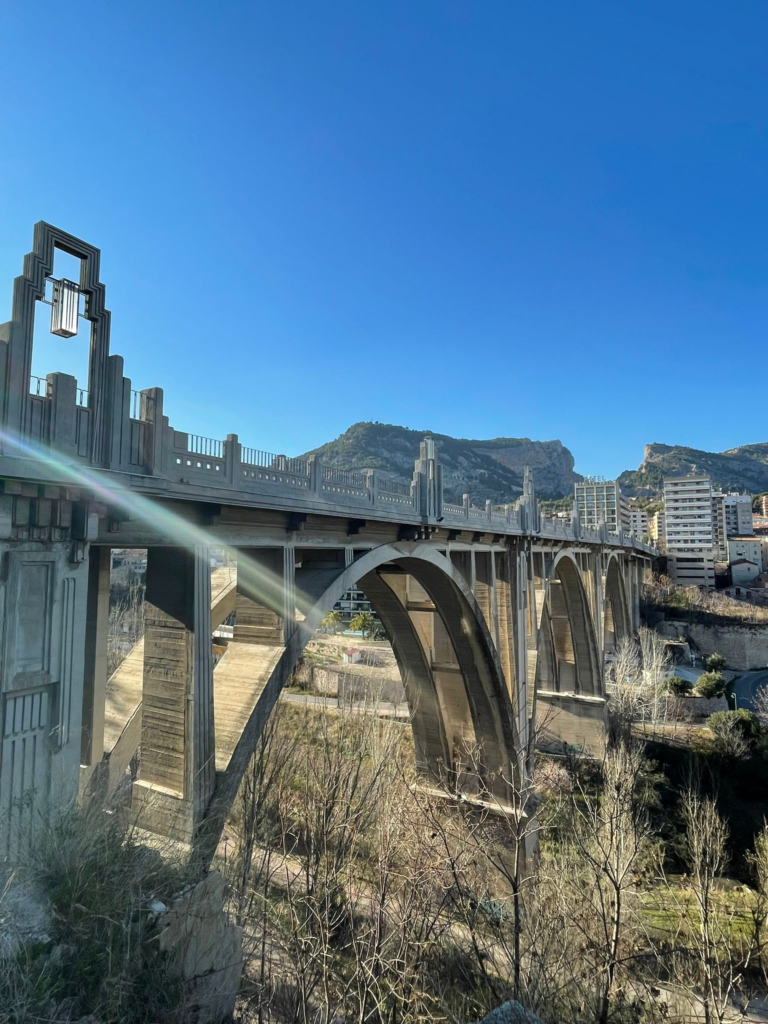
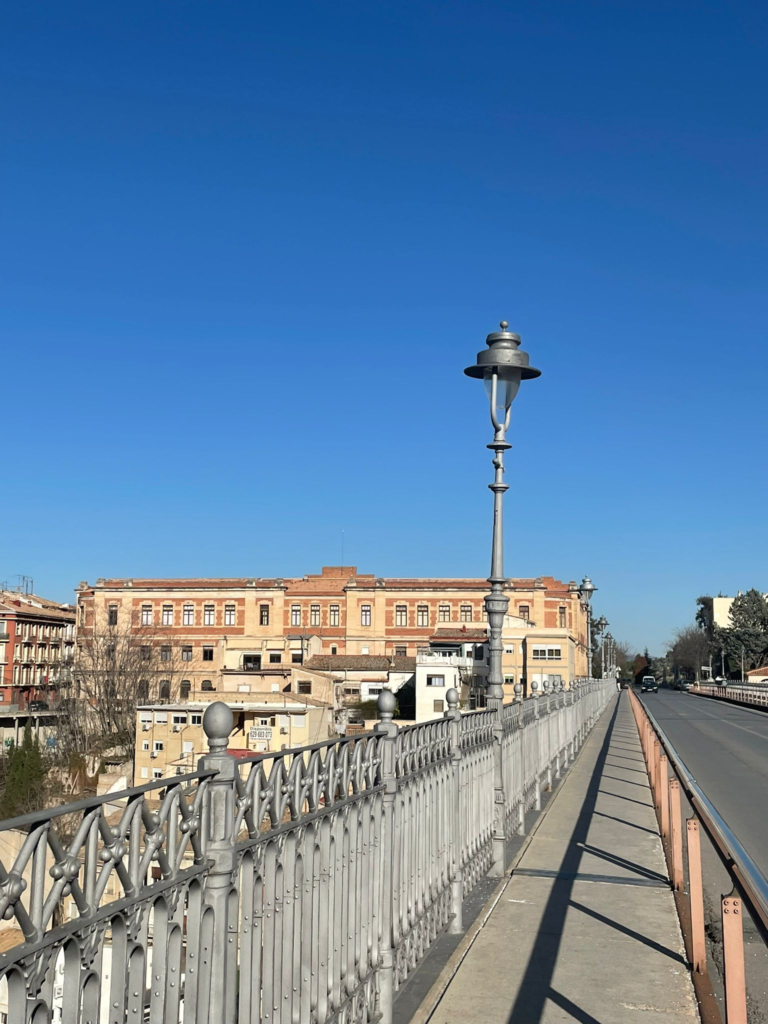
VIADUCTO DE CANALEJAS
The Canalejas Bridge was built to connect the city center with the Viaduct neighborhood and the road to Callosa d’En Sarrià, crossing the Molinar River. It was designed by the engineer Próspero Lafarga and built by the Alcoy engineer Enrique Vilaplana Juliá. Inaugurated in 1907, it was named in honor of the deputy to the Cortes for the district of Alcoy, José Canalejas Méndez. The structure is made of steel and weighs 352 tons, with three piers and two abutments. It is 162 meters long and its maximum height was 54 meters. At the time of its construction, it was considered one of the most remarkable engineering works in Spain.
MUSEO ARQUEOLÒGICO CAMILO VISEDO MOLTÓ
This Renaissance-style palace was built between 1572 and 1584 and is characterized by its columned portico and carefully designed windows. Since 1945, it has been the home of the Camil Visedo Moltó Municipal Archaeological Museum, which displays collections of archaeology, including ceramics from the Neolithic and Iberian inscriptions on lead sheets. Due to these collections and the building that houses them, in 1962 it was declared a Monument of Artistic Interest National.
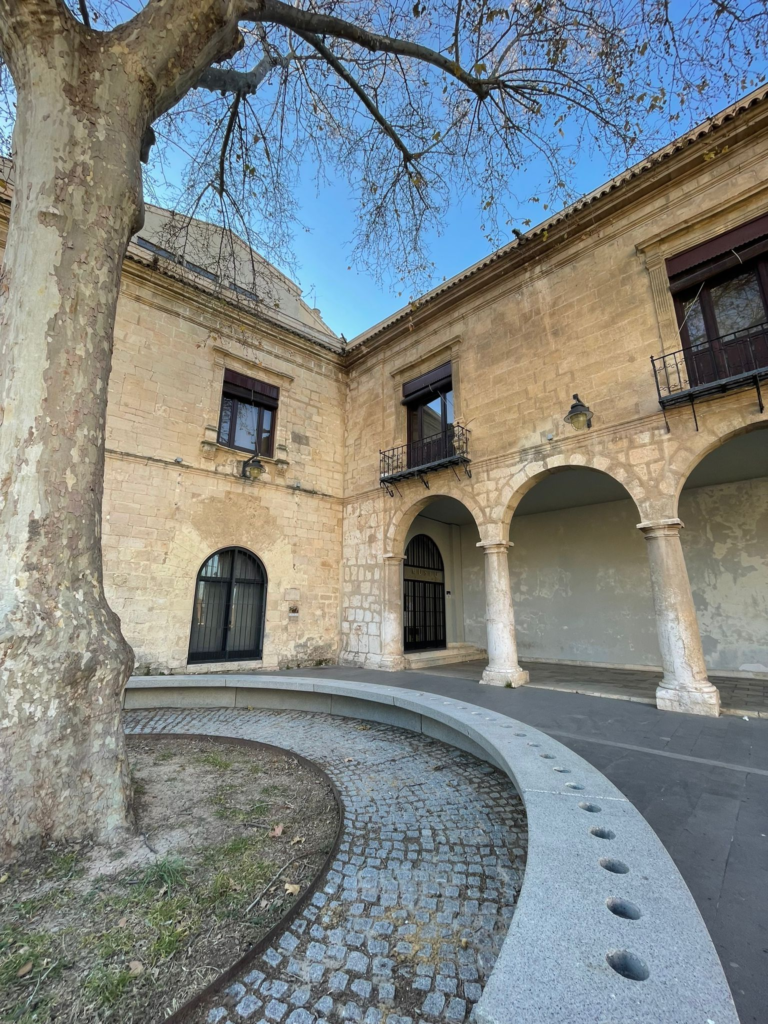
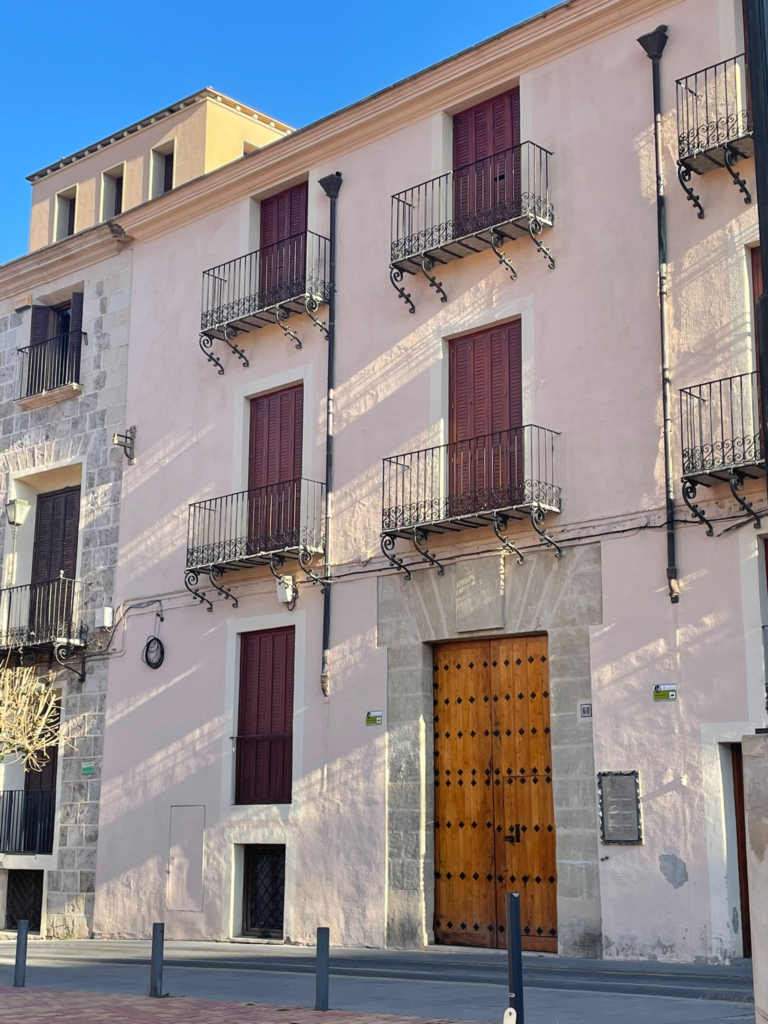
MUSEO DE LA FIESTA DE ALCOY
The Alcoyano Museum of the Festival, renovated thanks to the Association of San Jorge, is a cutting-edge space that contributes to the preservation and maintenance of the traditions and essence of the Moors and Christians Festival. Advanced technology has been used to create an educational and enjoyable experience that explores the memory and history of the community.
MUSEO MUBOMA
The building known as the “Tacos Factory” has been transformed into a cultural space after its conversion. It houses the Provincial Firefighters Museum, which displays the heritage accumulated by the different fire departments in the province of Alicante over time. The collection includes everything from the first vehicles used in fire-fighting duties to tools, equipment, clothing, and everything related to the history of this public service. The taco factory is an example of how large industrial buildings can be reused for cultural purposes.

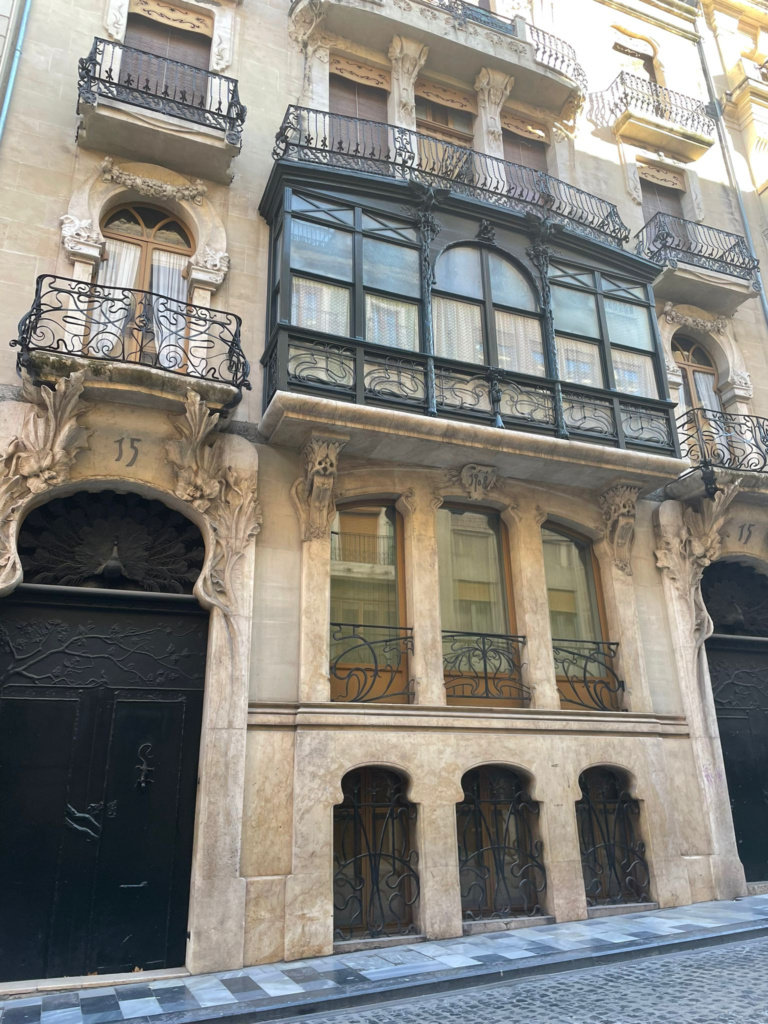
CASA DEL “PAVO”
The ‘’Edificio Casa del Pavo’’ is one of the most important private buildings in Alcoy and shows the economic prosperity that the city experienced in the early 20th century. This modernist building was built from 1908 to 1909 by the architect Vicente Pascual Pastor and is characterized by its forge details in balconies and lookout points, as well as its mosaics and representation of a turkey on the doors, which gives it its name. The house was also the studio of the famous Alcoy painter Fernando Cabrera Cantó in the 19th century.
CIRCULO INDUSTRIAL
The building, created in 1868 by the industrial class of Alcoy, is an iconic landmark of the city. With a modernist facade and Viennese influence, it was designed by Timoteo Briet in 1904 and features details such as bees symbolizing the industrialists and muses for the artists, wrought iron balconies, stuccos with sezession style drawings, and circles with hanging ornaments. Inside, there are different rooms decorated in styles such as sezession, art deco and art nouveau, including the Library and the Rotunda Hall. There is also a Grotto built by Vicente Pascual in 1896 under the Rotunda Hall.
During the Civil War, the building was confiscated and occupied by the National Confederation of Labor and the Iberian Anarchist Federation, and housed anti-fascist troops and was also used as a prison temporarily.
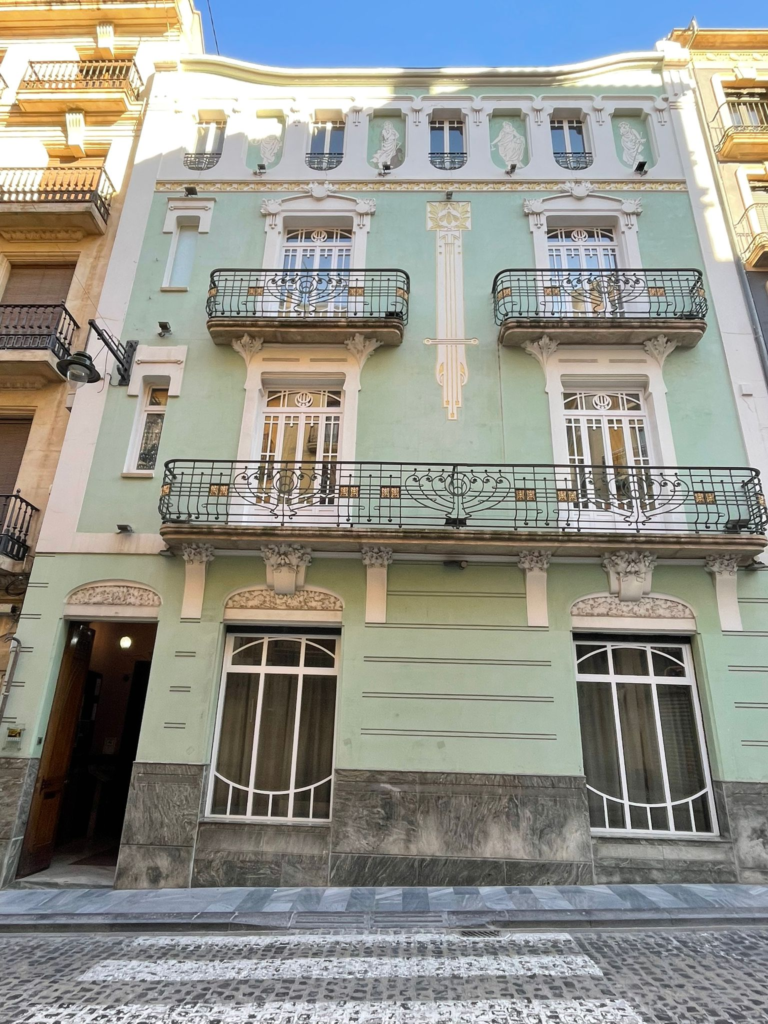
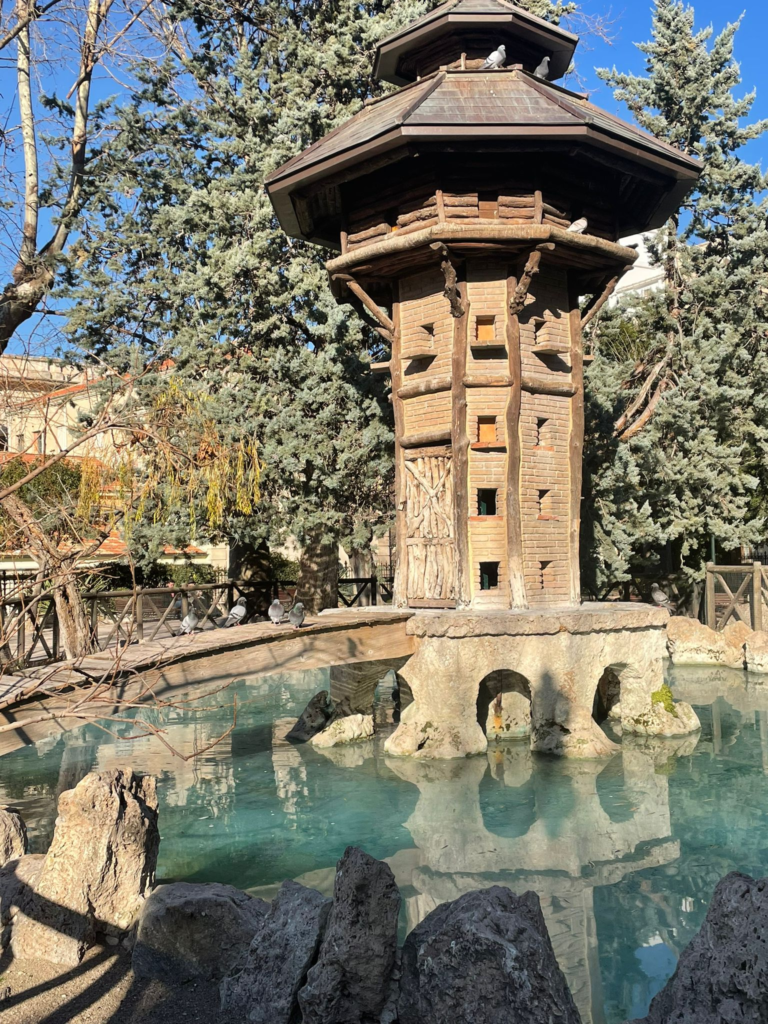
PARQUE DE LA GLORIETA
The Park is located on land that used to belong to the garden of the Convent of San Francisco, founded in 1569 and expropriated in 1835. Since 1836, it was the first public walking space in the city. Over time, the configuration of the Roundabout has been modified on several occasions, with the most significant renovation carried out by architect Vicente Pascual Pastor in 1899. This renovation turned the space into a large circular drive in the form of an ellipse divided into three large avenues, which are further divided into English-style gardens. The iron railing features an art nouveau design in the shape of a whip.
CASA D’ESCALÓ
The building called “Casa d’Escaló” is a unique Modernist structure with Art Nouveau influences, designed by Vicente Pascual Pastor in 1906-1908. Its exterior is striking due to its rustic stone, wrought iron railings, vegetation sculptures, laminated iron door and balconies, sinuous balconies and a curved upper part. The interior features mural paintings, carpentry, plaster moldings, ceramics, hydraulic pavement floors, among other details. The house was a former palace of the textile industrialist Enrique García Peidro, also known as “Escaló”, and was renovated in the 1980s to become the Municipal Conservatory of Music and Dance “Joan Cantó”.
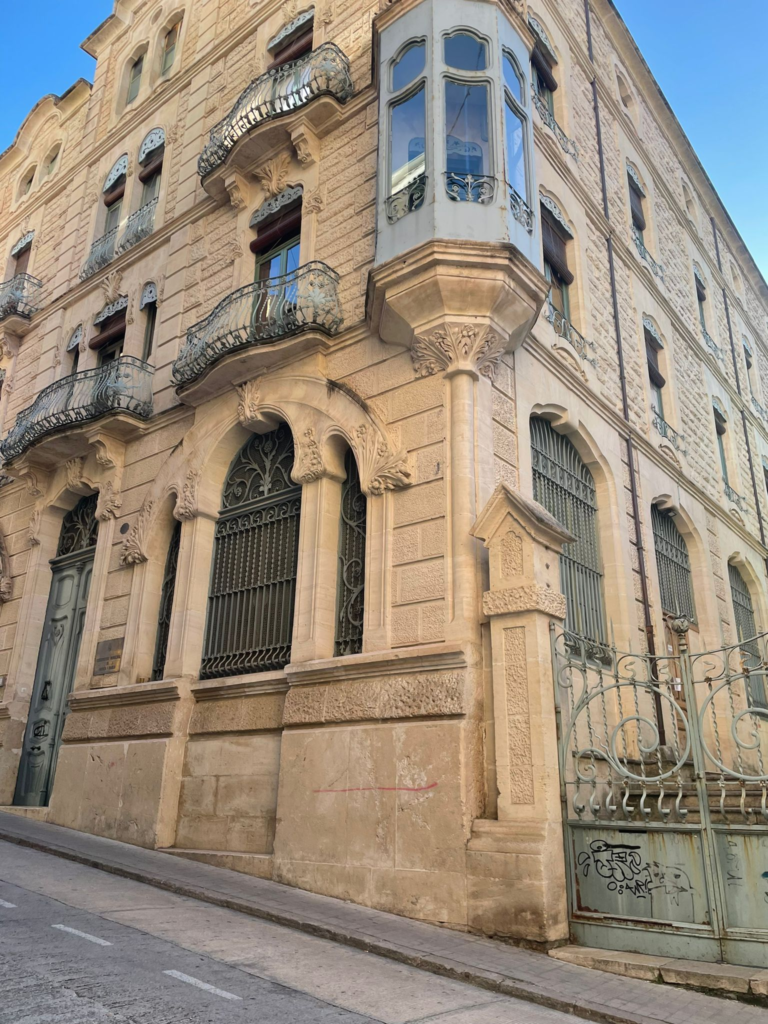
RECRATIONAL AREAS:
- Font de la Salut en Alcoy
- Font de Serelles en Alcoy
- Font del Quinzet en Alcoy
- Font Roja en Alcoy
- Hortet del Pobre en Alcoy
- Pista Collado en Alcoy
- Preventorio en Alcoy
- Racó Sant Bonaventura en Alcoy
- Sant Antoni en Alcoy
- Vía Verde en Alcoy
Routes
- Industrial Route in Alcoy
Alcoy was an important city during the Industrial Revolution, especially in the textile industry, but also in metallurgical and paper-making. To this day, the entire industrial complex that made up this area, designed in an efficient manner to take advantage of hydraulic energy according to topographical features, remains preserved.
- Ovidi Montllor Route
The Ovidi Montllor route is a tourist itinerary in the city of Alcoy, which focuses on paying tribute to the figure of the singer-songwriter Ovidi Montllor, who was born and grew up in this Spanish city. This route allows you to discover the places that were related to his life and his musical career, such as his birthplace, the church where he was baptized, and his school. In addition, the route also includes tourist and cultural points of interest in the city.
- The Sleeping City Route
The cemetery of Alcoy is rich in artistic variety, with an evolution of styles from eclecticism to art deco and rationalism. The free-standing pantheons are micro-architectures where artists have creative freedom. The tour “The sleeping city” allows you to discover different types of tombs, including the clergy and religious enclosure, the civil cemetery, the military plot, underground galleries unique in Spain, hypogea, cenotaphs and mass graves.
- Alcoy Cinema Route
The Alcoy Cinema Route is a tourist route that travels through the city’s locations related to the cinema and the history of Spanish cinema. It includes visits to emblematic places. The route is a unique way to know the history of the cinema and the culture of Alcoy.
- Fernando Cabrera Route
Fernando Cabrera (Alcoy, 1866-1937) is considered the most important painter of the 19th century. He developed his entire artistic career in his birthplace of Alcoy, only leaving to study in Valencia, Madrid, and Rome. He won gold and bronze medals in national and international contests, including the Universal Exhibitions of Paris and San Francisco. In addition to being a prominent painter, he was also a professor, art work designer, and a driving force for the cultural and artistic modernization of Alcoy. The city recognized him as “Favorite Son” and was also recognized by the Provincial Board and the Alicante City Council as “Adoptive Son”.
- Alcoy in War Times Route
In Alcoy, during the Spanish Civil War, the city underwent a profound change in terms of urbanism, society, and economy, as a result of the organization of popular militias, the construction of hospitals and shelters, the confiscation of buildings, and the presence of refugees and bombings. Alcoy is considered an observatory or workshop of the war. It is expected that the places related to the war will be a space for reflection and promotion of peace, tolerance, and solidarity attitudes, and is committed to offering a quality experience for tourists.
- Camilo Sesto Route
The Camilo Sesto Route in Alcoy is a tourist route that allows you to know the places related to the life and career of the Spanish singer and songwriter Camilo Sesto. This route may include visits to his birthplace, significant places from his youth and career, as well as monuments and commemorative plaques in his honor. The Camilo Sesto Route in Alcoy is an experience for the singer’s fans and for those interested in learning about the city’s history and culture.
- Cervantes Shelter
The Cervantes Shelter is one of over 25 places where the population of Alcoy sought refuge during the air attacks of the Spanish Civil War. This underground shelter, measuring over 100 meters in length, displays data and photographs of the attacks by Italian bombers Savoia 79. The exhibition also includes an interactive screen with military objects and a video with testimonies from people who lived through the attacks and their effects on the city.
- La Sarga Rock Paintings
These paintings are part of the patrimony of humanity (Cave art in the Mediterranean basin). La Sarga is located about 10 kilometres outside the city, where we can find cave paintings representing hunting and gathering scenes from almost 7,000 years ago, as well as figurative and schematic motifs. The paintings are currently protected by a fence a few metres away from visitors.
In 1998, La Sarga was included in the UNESCO World Heritage list of the Cave Art of the Mediterranean Arc of the Iberian Peninsula. In addition, the abrics and their protected environment have been declared a Site of Cultural Interest.